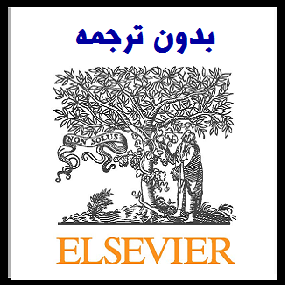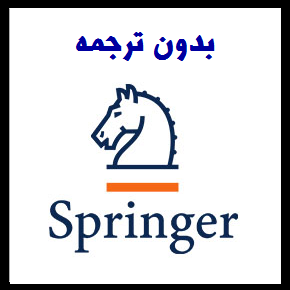مقاله انگلیسی پیوند رهبری استبدادی با خلاقیت کارکنان (2018 امرالد)


| عنوان فارسی مقاله | پیوند رهبری استبدادی با خلاقیت کارکنان: تأثیر تبادل رهبری-عضو، شناسایی گروه و فاصله قدرت |
| عنوان انگلیسی مقاله | Linking authoritarian leadership to employee creativity: The influences of leader–member exchange, team identification and power distance |
| نمونه مقاله انگلیسی | Introduction
Managers’ leadership has been widely considered as the key factor affecting employee creativity (Herrmann and Felfe, 2013; Le et al., 2017; Shalley and Gilson, 2004; Shalley et al., 2004; Qu et al., 2015). The various leadership styles, such as empowering leadership and transformational leadership, have been applied to exercise managers’ formal authority and position power, which have largely played the positive role in affecting employee creativity (Gong et al., 2009; Zhang and Bartol, 2010). Recently, however, much attention has focused on “the dark, or destructive, side of leadership” (Lee et al., 2013). The increase in frequency of such destructive leader behaviors and their significant impact on organizational and individual outcomes in the workplace are important reasons for this research interest. One such a construct that embodies leaders’ ineffective behavior is that of authoritarian leadership, which refers to a leadership approach that emphasizes leaders’ absolute authority and requires subordinates to be absolutely obedient (Cheng et al., 2000). Particularly in the Chinese culture, authoritarian leadership has been viewed as an important contextual factor that affect employees’ willingness and motivation to engage in creative activities because authoritarian leadership emphasize on obedience to authority and discourage the creative thinking of employee (Zhang et al., 2011). Given its dominance role in Chinese modern organizations (Zhang et al., 2015) and its significant role in influencing employee behaviors, few studies have begun to examine the effects of authoritarian leadership on creativity. For example, Zhang et al. (2011) reported a negative relationship between authoritarian leadership and group creativity at the group level. However, the extant literature is marked by some concerning limitations. First, although some scholars have started to explore the mediators between authoritarian leadership and employee outcomes (Chen et al., 2014), the underlying psychological mechanisms linking authoritarian leadership and employee creativity still are not fully understood. Given the fact that authoritarian leadership can influence employees’ psychological connections to their leaders and teams (Chan et al., 2013; Chen et al., 2014; Schaubroeck et al., 2017), and such psychological connections will ultimately contribute to employee creativity (Shalley and Perry-Smith, 2001), the potential psychological mediators linking authoritarian leadership and employee creativity should be clarified. One goal of this study is to address this limitation by identifying the psychological processes underlying the relationship between authoritarian leadership and employee creativity. Second, the effect of authoritarian leadership is contingent on individual differences, such as cultural values, but limited relevant research work has been done. Previous studies have argued that the cultural values employees hold play an important role in how employees react to authoritarian leadership (Pellegrini and Scandura, 2008; Schaubroeck et al., 2017). Therefore, another goal of this study is to empirically investigate the potential moderating role of cultural values to provide a better understanding of the relationship between authoritarian leadership and employee creativity. In this article, we draw from social exchange perspective that highlight the role of employees’ perceptions of their social exchange relationships with their leaders to argue that LMX mediates the relationship between authoritarian leadership and employee creativity. |
| نمونه ترجمه کامپیوتری | مقدمه
رهبران مدیران به طور گسترده ای به عنوان عامل کلیدی موثر بر خلاقیت کارکنان (Herrmann & Felfe 2013؛ Le et al.، 2017؛ Shalley and Gilson، 2004؛ Shalley et al.، 2004؛ Qu و همکاران، 2015) به طور گسترده ای در نظر گرفته شده است. سبک های رهبری مختلف، از قبیل توانمند سازی رهبری و رهبری تحول گرا، به منظور استفاده از قدرت رسمی و قدرت موقعیت مدیران، نقش مهمی در تأثیرگذاری بر خلاقیت کارکنان ایفا می کنند (Gong et al.، 2009؛ Zhang and Bartol، 2010 ) با این حال اخیرا توجه زیادی به سمت “تیره یا مخرب رهبری” متمرکز شده است (لی و همکاران، 2013). افزایش فرکانس رفتارهای رهبر مخرب و تأثیر قابل توجه آنها بر نتایج سازمانی و فردی در محل کار، دلایل مهمی برای این علاقه تحقیق است. یکی از این ساختارهایی که رفتار ناکارآمد رهبران را دربر می گیرد، رهبری استبدادی است، که اشاره به رویکرد رهبری دارد که بر اقتدار مطلق رهبران تأکید دارد و نیاز به زیردستان را کاملا مطلوب می کند (چنگ و همکاران، 2000). به ویژه در فرهنگ چینی، رهبری استبدادی به عنوان یک عامل اصلی مهم است که بر تمایل و انگیزه کارکنان برای شرکت در فعالیت های خلاق تأثیر می گذارد؛ زیرا رهبری استبدادی بر اطاعت از قدرت و تأکید بر تفکر خلاق کارکنان تأکید دارد (Zhang et al.، 2011 ) با توجه به نقش غالب آن در سازمان های مدرن چینی (Zhang et al.، 2015) و نقش قابل توجه آن در تأثیر رفتارهای کارکنان، مطالعات اندکی به بررسی تاثیر رهبری استبدادی بر خلاقیت پرداخته اند. به عنوان مثال، ژانگ و همکاران. (2011) رابطه منفی میان رهبری اقتدارگرا و خلاقیت گروهی در سطح گروه گزارش داد. با این حال، ادبیات در دسترس است با برخی از محدودیت های مشخص شده است. اول، اگرچه برخی از محققان شروع به کشف میانجیگری میان رهبری اقتدارگرا و نتایج کارکنان کرده اند (چن و همکاران، 2014)، مکانیزم های روانشناختی پایه ای که رهبری اقتدارگرا و خلاقیت کارکنان را پیوند می دهند هنوز کاملا درک نشده اند. با توجه به این واقعیت که رهبری مستبدانه می تواند روابط کارکنان روانی با رهبران و تیم های آنها را تحت تاثیر قرار دهد (چان و همکاران، 2013؛ چن و همکاران، 2014؛ Schaubroeck و همکاران، 2017) و چنین ارتباطات روانی در نهایت به خلاقیت کارکنان کمک خواهد کرد (شالي و پري اسميت، 2001)، ميانجيگرهاي روانشناختي بالقوه ارتباط رهبري اقتدارگرا و خلاقيت كاركنان بايد روشن شود. یکی از اهداف این مطالعه این است که با شناسایی فرایندهای روانی که مبنای رابطه رهبری استبدادی و خلاقیت کارکنان است، به این محدودیت رسیدگی شود. دوم، تاثیر رهبری استبدادی بر تفاوت های فردی، مانند ارزش های فرهنگی، بستگی دارد، اما محدودیت های تحقیقاتی مرتبط با آن محدود شده است. مطالعات قبلی استدلال می کنند که کارکنان ارزش های فرهنگی نقش مهمی در نحوه رفتار کارکنان با رهبری استبدادی دارند (Pellegrini و Scandura، 2008؛ Schaubroeck et al.، 2017). بنابراين، هدف ديگر اين مطالعه، تجربي به بررسي تجربي نقش پذيرش بالقوه ارزش هاي فرهنگي براي درك بهتر رابطه ي رهبري اقتدارگرا و خلاقيت كاركنان است. در این مقاله، از دیدگاه ارزشیابی اجتماعی که نقشی در ادراک کارکنان نسبت به روابط اجتماعی خود با رهبران آنها را برجسته می کند، تأکید می کنیم که LMX رابطه میان رهبری اقتدارگرا و خلاقیت کارکنان را متمایز می کند. توجه؛ (این ترجمه توسط نرم افزار انجام شده و ویرایش نشده است و احتمال وجود اشتباه در آن وجود دارد. در صورت ثبت سفارش، ترجمه توسط مترجمین مجرب انجام خواهد شد. برای مشاهده نمونه ترجمه های تخصصی و اخیر مترجمین جهت اطمینان از کیفیت ترجمه، اینجا کلیک نمایید.) |
| سال انتشار | 2018 |
| ناشر | امرالد |
| مجله | مطالعات مدیریت چینی – Chinese Management Studies |
| کلمات کلیدی | فاصله قدرت، تبادل رهبر عضو، خلاقیت کارکنان، شناسایی تیم، رهبری استبدادی |
| کلمات کلیدی انگلیسی |
Power distance, Leader–member exchange, Employee creativity, Team identification, Authoritarian leadership |
| صفحات مقاله انگلیسی | 24 |
| مناسب برای رشته | مدیریت |
| مناسب برای گرایش | مدیریت اجرایی، مدیریت منابع انسانی |
| توضحیات | این مقاله انگلیسی جدید بوده و تا کنون ترجمه نشده است. جهت ثبت سفارش ترجمه از لینکهای زیر استفاده نمایید. |
| دانلود مقاله انگلیسی | ○ دانلود رایگان مقاله انگلیسی با فرمت pdf (کلیک کنید) |
| سفارش ترجمه فارسی | ○ سفارش انجام ترجمه و تایپ این مقاله (کلیک کنید) |
| سایر مقالات این رشته | ○ مشاهده سایر مقالات رشته مدیریت (کلیک کنید) |




